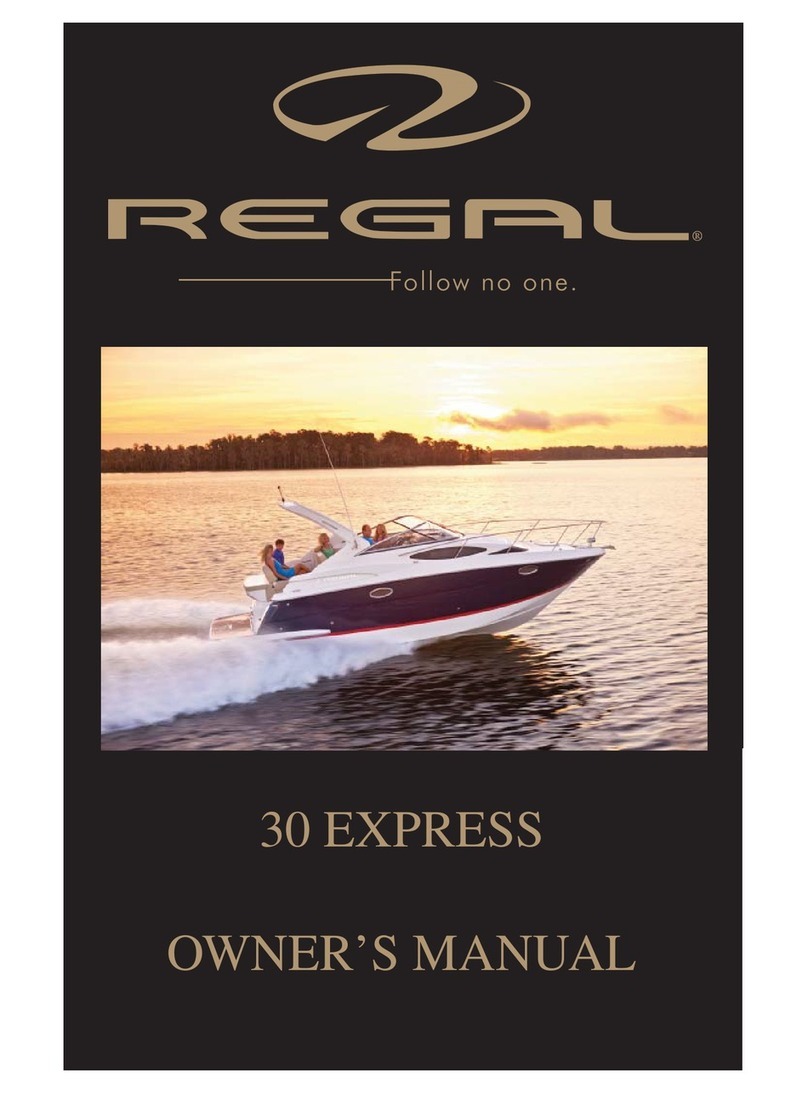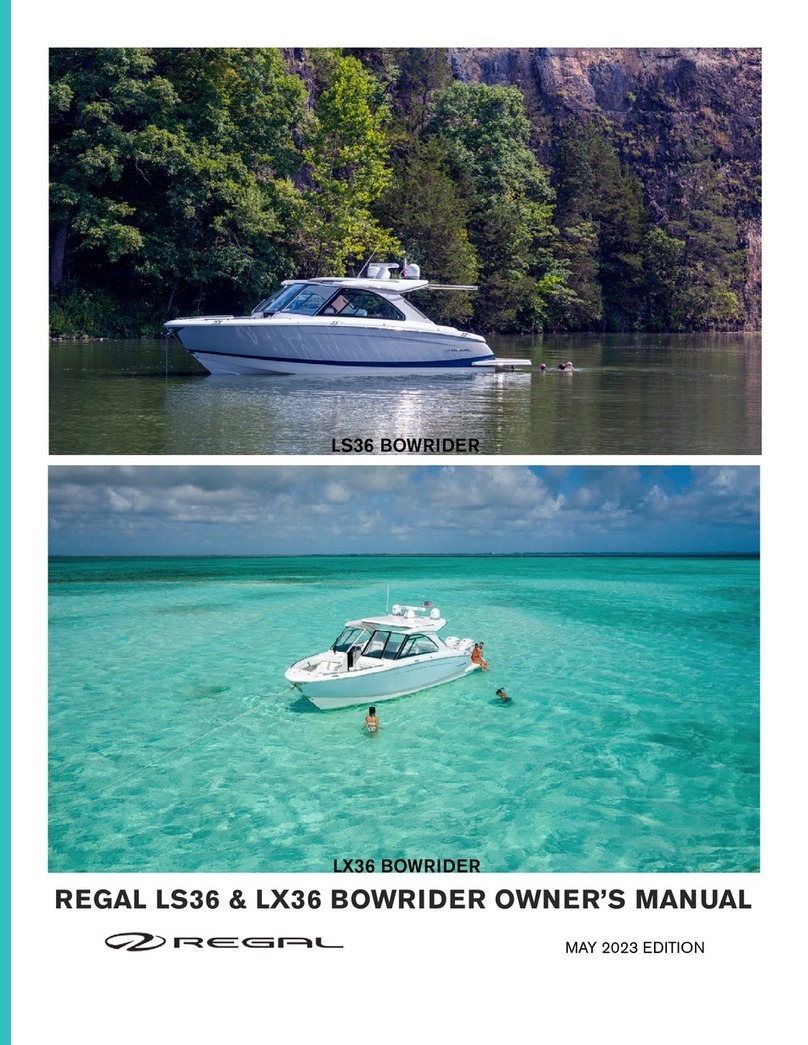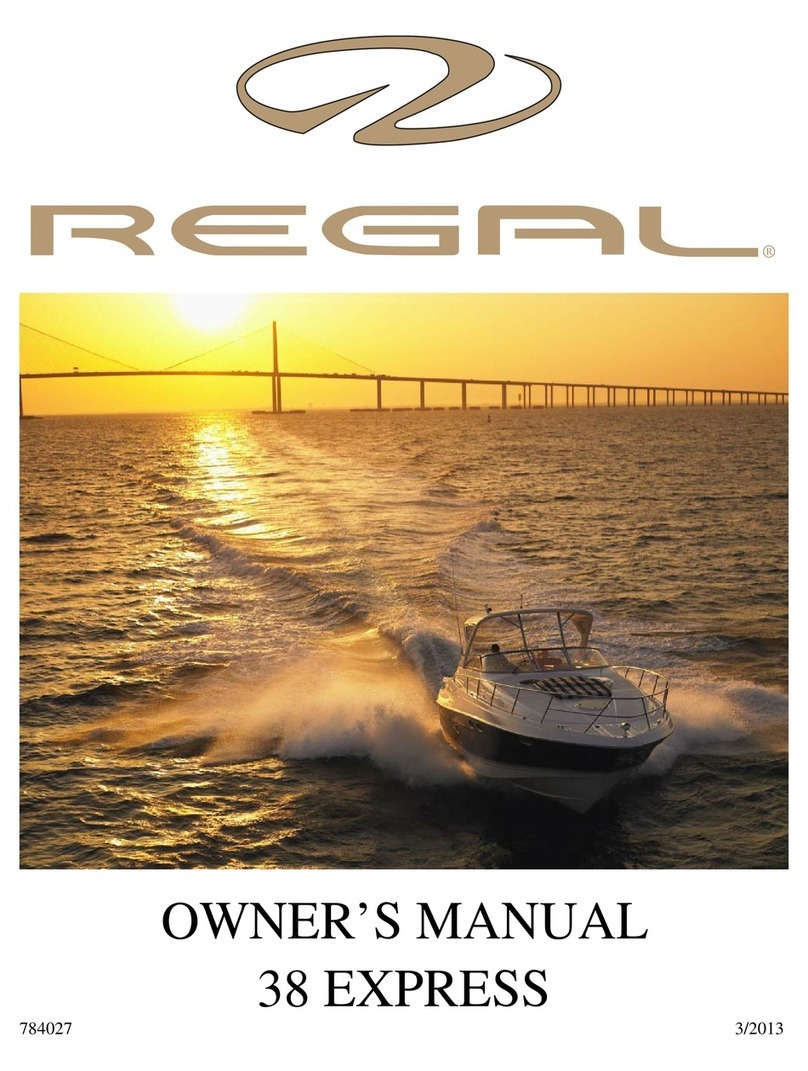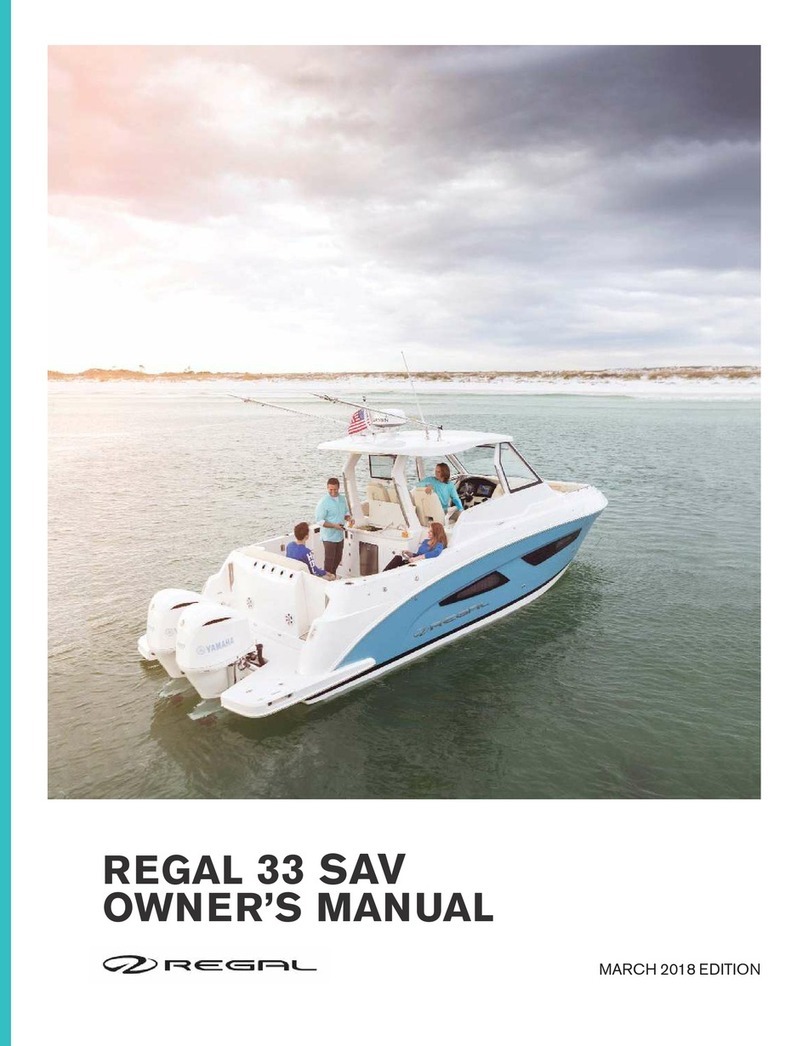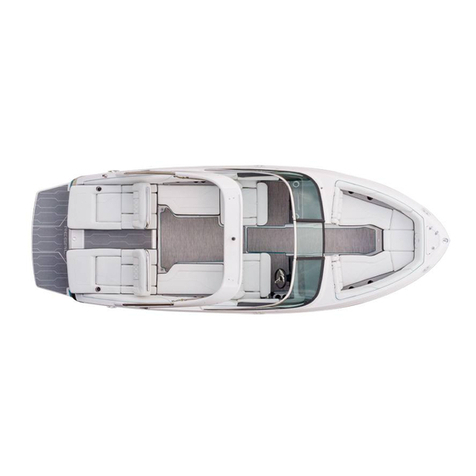
2
OWNER’S MANUAL RESPONSIBILITIES
• Select Regal models are spark-ignition models.
•As the spark-ignition marine watercraft owner,
you are responsible for the performance of the
required maintenance listed in your owner’s
manual. Regal Marine Industries, Inc. recom-
mends that you retain all receipts covering
maintenance on your spark-ignition marine wa-
tercraft, but Regal Marine Industries, Inc. cannot
deny warranty solely on the lack of receipts.
•As the owner, you should be aware that Regal
Marine Industries, Inc. may deny you warranty
coverage of your spark-ignition marine water-
craft or a part has failed due to abuse, neglect,
or improper maintenance or unapproved modi-
fications.
•You are responsible for presenting your spark-
ignition marine watercraft to a Regal Marine
Industries, Inc. distribution center or a service
center as soon as the problem exists. The war-
ranty repairs should be completed in a reason-
able amount of time, not to exceed 30 days. If
you have any questions regarding your warranty
coverage, you should contact Regal Marine
Industries, Inc. at 407-851-4360.
CALIFORNIA PROPOSITION 65
Boats manufactured for use in California for model
year 2018 and after meet the California EVAP
Emissions regulation for spark-ignition marine
watercraft. Boats meeting this requirement will have
a label affixed near the helm.
The fuel system in this boat complies with U.S. EPA
mandated evaporative emission standards at time
of manufacture using certified components.
Operating, servicing and maintaining a recreational
marine vessel can expose you to chemicals including
engine exhaust, carbon monoxide, phthalates, and lead,
which are known to the State of California to cause
cancer and birth defects or other reproductive harm.
To minimize exposure, avoid breathing exhaust, service
your vessel in a well-ventilated area and wear gloves or
wash your hands frequently when servicing this vessel.
For more information go to: www.P65warnings.ca.gov/
marine.
Notes
Introduction
MANUFACTURER’S WARRANTY COVERAGE
This evaporative emission control system is
warranted for two years. If any evaporative emission-
related part on your spark-ignition marine watercraft
is defective, the part will be repaired by Regal
Marine Industries, Inc.
Chapter 1

